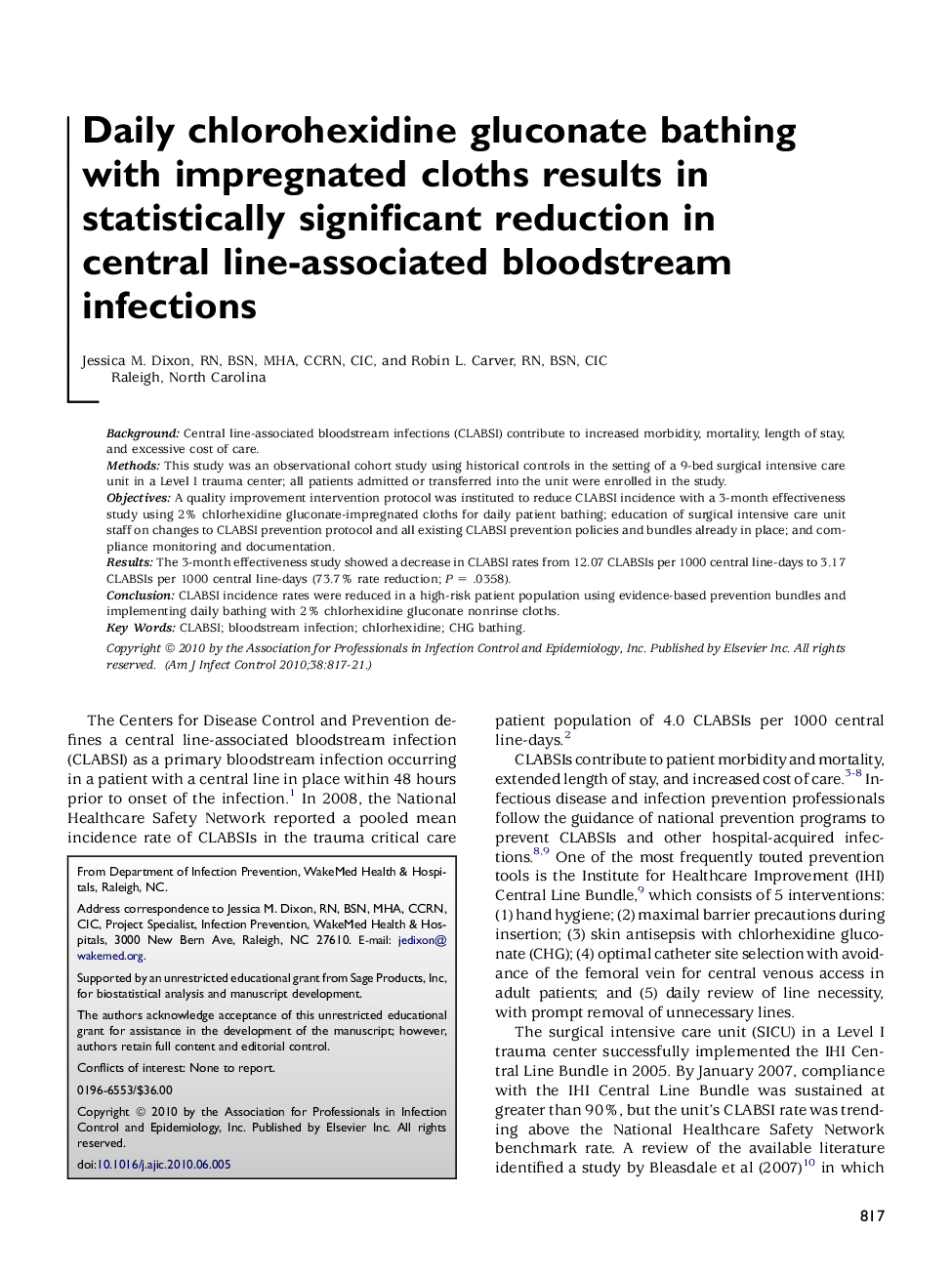| Article ID | Journal | Published Year | Pages | File Type |
|---|---|---|---|---|
| 2638991 | American Journal of Infection Control | 2010 | 5 Pages |
BackgroundCentral line-associated bloodstream infections (CLABSI) contribute to increased morbidity, mortality, length of stay, and excessive cost of care.MethodsThis study was an observational cohort study using historical controls in the setting of a 9-bed surgical intensive care unit in a Level I trauma center; all patients admitted or transferred into the unit were enrolled in the study.ObjectivesA quality improvement intervention protocol was instituted to reduce CLABSI incidence with a 3-month effectiveness study using 2% chlorhexidine gluconate-impregnated cloths for daily patient bathing; education of surgical intensive care unit staff on changes to CLABSI prevention protocol and all existing CLABSI prevention policies and bundles already in place; and compliance monitoring and documentation.ResultsThe 3-month effectiveness study showed a decrease in CLABSI rates from 12.07 CLABSIs per 1000 central line-days to 3.17 CLABSIs per 1000 central line-days (73.7% rate reduction; P = .0358).ConclusionCLABSI incidence rates were reduced in a high-risk patient population using evidence-based prevention bundles and implementing daily bathing with 2% chlorhexidine gluconate nonrinse cloths.
